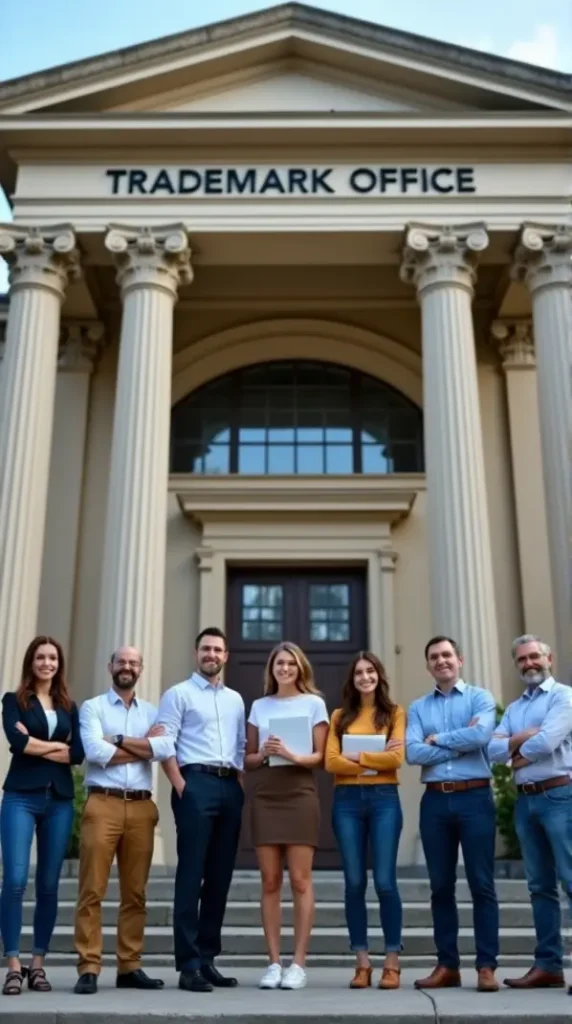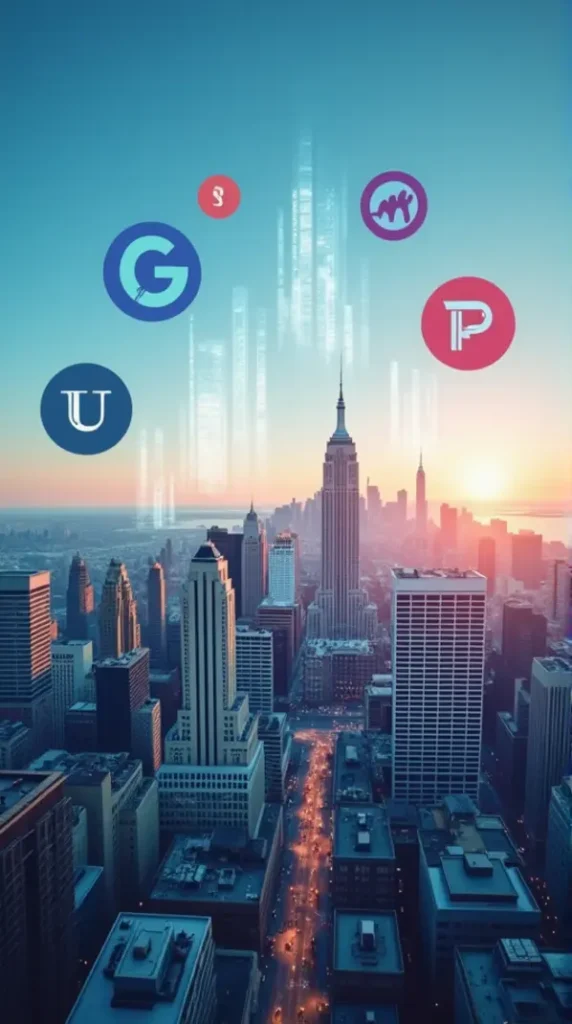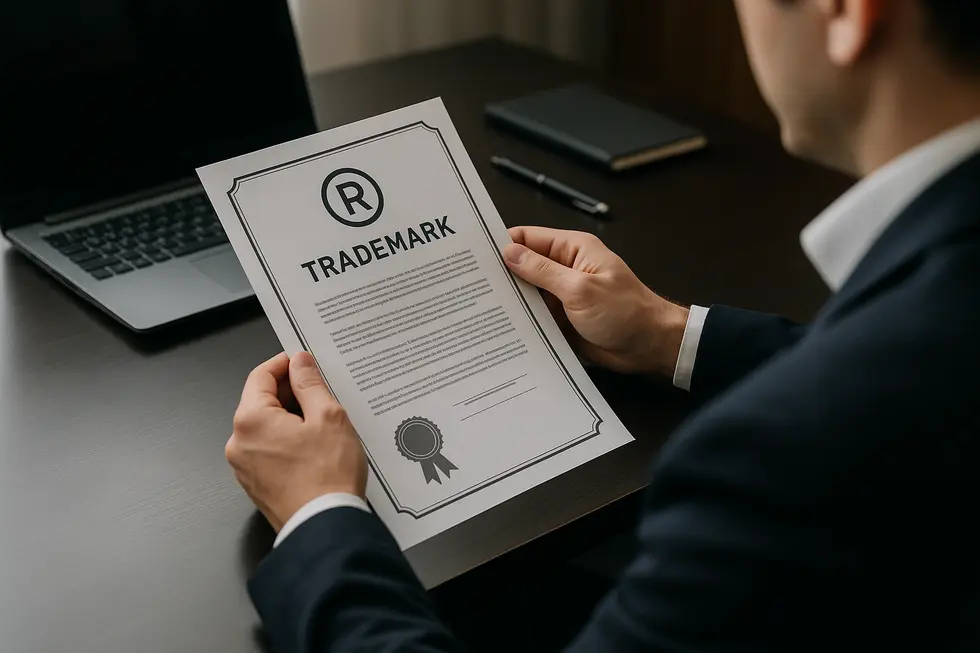Introduction
Navigating the complexities of copyright is essential for business owners who create, use, or distribute original content. Recognizing what “copyrighted” means unlocks a clearer understanding of the protections your work may have and how to respect others’ rights. This knowledge not only safeguards your assets but also empowers you to innovate within legal boundaries. Each chapter of this guide dives deeper: starting with the legal definition of copyrighted meaning; exploring the vast range of protected works; outlining the exclusive rights it grants; highlighting how long those protections last and where limits apply; and finally, examining the broader role copyright plays in fostering creativity and societal growth. By understanding these layers, business owners can better navigate copyright law to protect their interests and respect others’, creating a fair and thriving environment for all.
Tables of Contents
Chapter 1: Understanding Copyrighted Meaning in Legal Contexts
- The Legal Foundations and Limits of Copyright Protection
- Navigating Copyright Ownership, Duration, and Exclusive Rights in Creative Works
- Navigating Copyright Boundaries: Limitations, Exceptions, and the Public Interest Balance
Chapter 2: Exploring the Boundaries of Copyrighted Meaning: Identifying Protected Creative Works
- Defining Copyright’s Reach: The Varied Categories of Protected Works
- Balancing Creative Control and Public Access: Key Limitations within Copyright Protection
- Unpacking Copyright Protection: Duration, Exclusive Rights, and Their Legal Boundaries
Chapter 3: Rights and Protections Under Copyrighted Meaning
- How Exclusive Economic Rights Empower Creators to Control and Benefit from Their Works
- How Automatic Copyright Protection Shapes the Creator’s Exclusive Rights
- Balancing Creator Control and Public Interest: Limitations and Moral Rights in Copyright
Chapter 4: Duration and Limitations of Copyrighted Meaning
- Navigating Legal Timeframes: How Long Does Copyrighted Meaning Last and What It Means
- Navigating Copyright Limits: How Public Access and Creator Rights Coexist
- How Society and Technology Reshape the Lifespan and Limits of Copyrighted Works
Chapter 5: The Purpose and Impact of Copyrighted Meaning on Creativity and Society
- How Legal Protections and Economic Rewards Fuel Creative Innovation
- Navigating the Delicate Balance: How Copyright Shapes Creativity and Public Access
- Navigating Copyrighted Meaning Amid AI Innovation: Societal Challenges and Legal Nuances
Chapter 1: Understanding Copyrighted Meaning in Legal Contexts

1. The Legal Foundations and Limits of Copyright Protection
At its core, copyright provides a legal shield for creators, granting them exclusive control over how their original works are used. This protection springs into effect automatically the moment a work is fixed in a tangible form, such as writing, recording, or digital creation. There is no requirement for formal registration or affixing a © symbol, though these measures can bolster legal enforcement if disputes arise.
Legally, copyright is framed to protect only the specific expression of ideas, not the ideas themselves. For example, while the storyline of a novel or the tune of a song is shielded, the underlying themes or concepts remain free for others to explore. To qualify, a work must demonstrate originality—a minimal level of creativity distinguishing it from mere facts or common knowledge. This original expression can take many forms, including literary, musical, artistic, or audiovisual works.
The rights granted under copyright are twofold: moral and economic. Moral rights safeguard the creator’s personal connection to their work, preventing distortion or misattribution, while economic rights empower creators to monetize their work through reproduction, distribution, public performance, and the creation of derivative works. This framework essentially acts as a negative right; it enables the copyright holder to prevent unauthorized use rather than granting others automatic permission to use the work.
However, copyright law balances creator control with public interest by allowing certain exemptions, such as fair use. Fair use permits limited use for purposes like commentary, criticism, or education, ensuring access and dialogue around creative works.
Violations of copyright, such as unauthorized copying or distribution, constitute infringement and can harm both the creator’s income and reputation. This emphasizes the importance of understanding the legal scope and protections provided by copyright as a means to encourage innovation while respecting creator rights.
For a deeper exploration of the characteristics and protections offered by copyright, Bytescare offers a comprehensive explanation.
2. Navigating Copyright Ownership, Duration, and Exclusive Rights in Creative Works
Copyright protection arises the moment an original work is fixed in a tangible form, granting the creator exclusive legal control over its use and distribution. This automatic safeguard empowers authors to prevent unauthorized copying, publishing, or exploitation, ensuring their creative efforts receive both recognition and economic benefit. The initial ownership of a copyrighted work rests with its author, who holds exclusive rights to reproduce, distribute, perform, display, and create derivative works. However, ownership can shift through contracts, such as copyright transfer agreements, commonly used when works are commissioned, published, or created within employment. This distinction between authorship and ownership means that while the creator often holds the rights originally, another party—like a publisher or employer—may later become the rights holder.
Duration of copyright varies by jurisdiction and work type but generally extends well beyond the author’s life to protect their legacy. For example, in the UK, literary and artistic works remain protected for 70 years after the author’s death, while sound recordings and typographical arrangements have shorter terms. Such temporal limits balance long-term creator rights with eventual public domain availability. The exclusive rights encompassed by copyright form a bundle that includes reproduction, distribution, public performance or display, and adaptation of the work into new forms. These rights allow creators to decide how their work circulates commercially or publicly. Alongside these protections, copyright law incorporates exceptions such as fair dealing or fair use provisions, which enable limited use without permission for purposes like research, criticism, or accessibility under international agreements.
This framework secures creators’ control over their original expressions, fostering creativity and innovation while safeguarding public interests. For a detailed overview of how ownership and duration apply within UK law, resources like the University of Sussex’s copyright guide offer valuable insights. Additionally, distinctions in authorship and rights transfer in the U.S. context are explained in the US Naval War College guide.
For further contextual understanding of intellectual property rights and their distinctions, exploring comprehensive discussions on categories of rights can deepen appreciation of how copyright fits alongside trademarks and patents.
3. Navigating Copyright Boundaries: Limitations, Exceptions, and the Public Interest Balance
Navigating Copyright Boundaries: Limitations, Exceptions, and the Public Interest Balance
While copyright grants creators exclusive control over their original works, this control is not absolute. Essential limitations and exceptions exist to prevent copyright from stifling access to knowledge and cultural growth. These safeguards maintain a vital balance between protecting creators’ rights and serving the broader public interest.
Core to these boundaries is the idea-expression dichotomy, which clarifies that only specific expressions—not the underlying ideas or concepts—are protected. This principle ensures fundamental ideas remain free for public use and further creativity. Alongside this, the concept of the public domain plays a crucial role. Works whose copyright terms have expired enter this domain, allowing unrestricted access and use by anyone.
The doctrine of fair use (or fair dealing in some jurisdictions) further refines this equilibrium. It permits limited, unauthorized use of copyrighted material, especially for criticism, education, research, news, or parody. Courts carefully evaluate each fair use claim by examining factors like the purpose of use, the nature and amount of the original work utilized, and the impact on the market value of the original. Landmark rulings, such as those permitting time-shifting or transformative parodies, have expanded fair use’s scope, fostering innovation while respecting creators’ interests.
Additionally, the first sale doctrine ensures that once a legally acquired copy of a work is sold, copyright holders cannot restrict its resale or lending, supporting thriving secondary markets such as libraries and used bookstores.
Balancing copyright protection with public benefit is increasingly significant in the digital era and emerging technologies like AI. Legal systems continue evolving, promoting flexible copyright durations, expanding fair use doctrines, and encouraging open licensing to maintain innovation without undermining creator incentives.
This nuanced framework underscores copyright law’s dual mission: securing creators’ economic rights while fostering cultural advancement and public access. For a deeper exploration of these principles and landmark cases shaping fair use, see the Kanoonpedia Comprehensive Guide.
For related insights into intellectual property rights, visit Categories of Intellectual Property Rights.
Chapter 2: Exploring the Boundaries of Copyrighted Meaning: Identifying Protected Creative Works
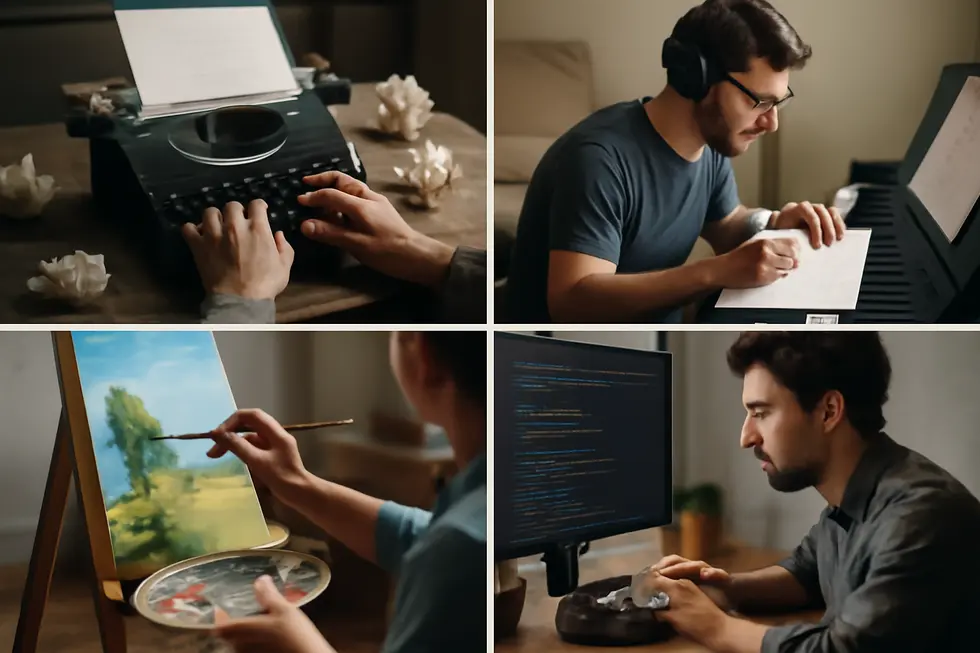
1. Defining Copyright’s Reach: The Varied Categories of Protected Works
Copyright protection embraces a broad spectrum of creative expressions, granting exclusive legal rights to creators over their original works fixed in tangible form. These include literary works such as novels, poems, and essays, which capture ideas through written language. Musical works are protected as well, covering compositions, songs, and scores that embody musical creativity. Dramatic works extend this to plays and screenplays, which blend narrative and performance. Visual arts find protection in artistic works, including paintings, photographs, and sculptures, reflecting the diversity of human imagination across mediums.
Beyond these familiar categories, copyright law also safeguards performance-related creativity. Pantomimes and choreographic works—forms of expressive movement and dance—are recognized as deserving protection when adequately documented. Similarly, pictorial, graphic, and sculptural works encompass technical drawings, architectural designs, maps, and other visual representations important in various industries.
The legal reach of copyright further covers motion pictures and audiovisual works such as films and television programs, recognizing the complex combination of visual and audio elements. Sound recordings—encompassing music tracks, podcasts, and other recorded audio—also fall under this protection. With technological advances, computer programs are explicitly included, safeguarding software source code and applications that drive modern digital experiences. Innovative mask works used in semiconductor chips represent a more specialized category currently receiving copyright coverage.
Notably, copyright does not safeguard ideas, concepts, procedures, or methods themselves. Instead, it protects only the specific form of expression that embodies those ideas. This distinction ensures that creativity and innovation remain balanced with access and continued advancement. More details on these categories and their scope can be found through a comprehensive overview of copyright.
For creators and businesses interested in understanding how these protections interact with other intellectual property rights, exploring the different categories of intellectual property rights can provide valuable context.
2. Balancing Creative Control and Public Access: Key Limitations within Copyright Protection
Copyright protection empowers creators with exclusive rights over their original works, but these rights are not without boundaries. Several important limitations and exceptions exist to ensure that copyright law serves both creators and the public interest. These boundaries define what is protected and what remains accessible, fostering a balanced ecosystem of creativity and information sharing.
One central limitation is the fair use doctrine in the United States, which permits limited use of copyrighted material without permission for purposes such as criticism, commentary, news reporting, teaching, scholarship, and research. This doctrine relies on a case-by-case evaluation considering the purpose and character of use, the nature of the copyrighted work, the amount used, and the effect on the market value of the original. Because fair use is flexible and contextual, it offers vital leeway for free expression and educational activities.
Similarly, the statute’s educational exceptions allow instructors to perform or display works during face-to-face classroom teaching without infringement. This supports learning while respecting creators’ rights. In Commonwealth countries, a similar concept known as fair dealing permits reasonable use of works for research, private study, or criticism, reflecting a global recognition of educational and societal needs.
Certain elements—such as titles, names, short phrases, and individual characters—fall outside copyright protection altogether, though some may qualify for trademark protection, as discussed in more detail at trademarkgold.com/categories-intellectual-property-rights.
Accessibility exceptions, bolstered by international agreements like the Marrakesh Treaty, authorize adaptations of works into formats like Braille or subtitles for people with disabilities without infringing copyright. Other restrictions can arise through licensing agreements, which might further narrow permissible use beyond statutory exceptions.
Importantly, copyright protection is not indefinite. It typically lasts for the author’s lifetime plus 70 years in many jurisdictions, after which works enter the public domain and become freely available for any use.
Together, these limitations and exclusions create a framework that respects creators’ legal rights while enabling education, innovation, and accessibility. For more details on these provisions, consult the U.S. Copyright Act Sections 107 and 110 and international texts such as the Marrakesh Treaty.
3. Unpacking Copyright Protection: Duration, Exclusive Rights, and Their Legal Boundaries
Copyright protection secures creators’ exclusive rights over their original works, ensuring control over how these works are used, reproduced, and shared. This legal safeguard applies to creations fixed in a tangible medium—be it a novel, a song, a painting, or digital content. Importantly, copyright does not protect abstract ideas or concepts but only their specific expression in a concrete form.
The duration of this protection is intentionally finite, balancing creators’ interests with eventual public access. In many jurisdictions, including the U.S., copyright lasts for the life of the author plus 70 years. This extended term allows authors and their heirs to benefit from the work’s commercial use over a substantial period. Once this term expires, the work enters the public domain, available for free use by anyone.
During the copyright term, holders receive a bundle of exclusive rights codified under U.S. law (Title 17, Section 106). These include the sole right to reproduce the work, create derivative adaptations, distribute copies, and publicly perform or display the work. These rights empower copyright owners to prevent unauthorized exploitation and authorize controlled uses through licensing. Adaptations might involve turning a book into a screenplay or rearranging a musical composition, all requiring the copyright holder’s consent.
However, copyright is not absolute; legal exceptions like fair use accommodate education, commentary, and research without infringing on these rights. Additionally, copyright arises automatically upon fixation of the work—registration or marking with a © symbol is not required but can aid legal enforcement.
As creative industries evolve, copyright now encompasses digital media and emerging formats, demonstrating its adaptability to new forms of expression. For a comprehensive understanding of how these rights function and their legal grounding, see this detailed explanation on the nature and scope of copyright.
Chapter 3: Rights and Protections Under Copyrighted Meaning
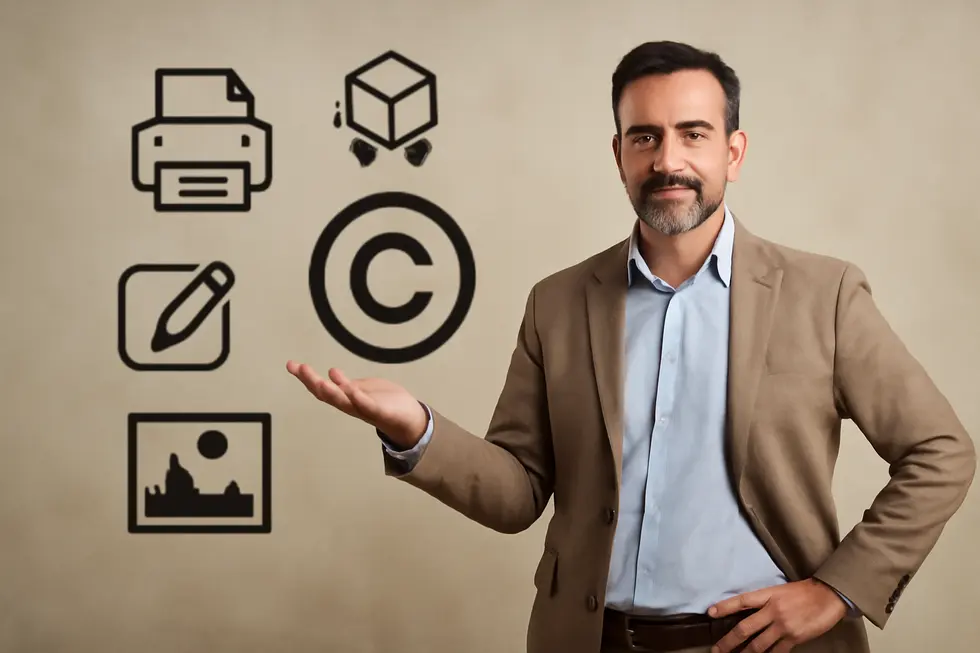
1. How Exclusive Economic Rights Empower Creators to Control and Benefit from Their Works
Exclusive economic rights form the core of copyright protection, granting creators a powerful legal monopoly over their original works. These rights enable the copyright owner to determine if, when, and how their creations—whether books, music, films, or artistic works—can be reproduced, distributed, publicly performed, or adapted. By holding these exclusive privileges, creators obtain the ability to generate financial returns from their intellectual efforts through direct sales, licensing agreements, or other commercial uses.
These rights are not merely symbolic; they translate into tangible control. For example, an author can prevent unauthorized copying or sale of their book, while a musician may license songs for use in films or advertisements. This legal exclusivity incentivizes innovation and artistic expression by assuring creators that their investment of time and talent will be protected and potentially rewarded.
Importantly, exclusive economic rights are limited in duration, often lasting the creator’s lifetime plus several decades, after which the work enters the public domain. This balance ensures that while rights holders enjoy temporary control and benefits, society eventually gains free access to cultural works.
Although closely linked, these economic rights differ from moral rights, which safeguard the personal and reputational interests of creators, such as attribution and integrity of the work. Moral rights typically cannot be sold or transferred, emphasizing the personal bond between artist and creation.
To better understand the broader legal framework that these economic rights operate within, including nuances of copyright protection and how it fosters creativity, consider reviewing detailed discussions on copyright characteristics.
Through this system of exclusive economic rights, copyright establishes a legal environment that empowers creators to maintain control over their original expressions while encouraging public access in the long run.
2. How Automatic Copyright Protection Shapes the Creator’s Exclusive Rights
Copyright protection begins the moment an original work is fixed in a tangible form, with no registration required. This automatic protection underpins the entire framework of rights and protections granted to creators. Whether a piece of writing, music, software code, or visual art, the law recognizes these expressions immediately, empowering authors to control how their work is used.
The scope of these rights is broad and comprehensive. Copyright holders possess exclusive rights to reproduce their work, distribute copies, publicly display or perform it, and create derivative works. These privileges enable creators not only to manage usage but also to monetize their efforts, driving the ongoing creation of new content. Importantly, while ideas, concepts, or facts cannot be copyrighted, the specific tangible expression of those ideas is fully protected. This distinction ensures that creativity is safeguarded without hindering access to underlying information.
Beyond economic rights, some legal systems recognize moral rights that protect the personal connection between creators and their work. These rights include the ability to claim authorship and to object to distortions that might harm the creator’s reputation. The duration of copyright typically extends for the life of the author plus 70 years, offering long-lasting protection for their creative legacy.
In the digital age, enforcement of these rights is strengthened by technology. Automated detection tools scan online platforms to identify unauthorized reproductions and support rapid rights enforcement. Such technologies extend protection practically, complementing legal provisions.
This interplay of automatic protection and expansive rights firmly establishes the legal footing for creators, allowing them to safeguard and benefit from their original contributions.For further insight, readers may explore automatic copyright protection and its legal benefits.
3. Balancing Creator Control and Public Interest: Limitations and Moral Rights in Copyright
Copyright law grants creators exclusive control over their original works, but this control exists within important boundaries that balance individual rights with public interest. A fundamental limitation is that copyright protects only the specific expression of ideas, not the ideas or concepts themselves. For instance, if a novel depicts a magical school, others remain free to write stories about magical schools without copying the original narrative, characters, or wording. This distinction fosters creativity by encouraging new, original works inspired by shared themes rather than restricting use of broad concepts.
Another key limitation concerns the duration of copyright protection. Copyright does not last indefinitely; it generally extends for the life of the author plus a set period, often 70 years in jurisdictions like the United States. This finite term ensures that creative works eventually enter the public domain, allowing unrestricted use that benefits cultural enrichment and knowledge dissemination.
Alongside economic rights that govern reproduction and distribution, moral rights also play a vital role in copyright protection. These rights focus on the creator’s personal and reputational interests, ensuring the author is properly credited (right of paternity) and that their work is not subjected to derogatory alterations that could harm their reputation (right of integrity). Unlike economic rights, moral rights may persist beyond the economic term, continuing to safeguard the emotional and personal connection creators have with their works.
Thus, copyright is not an absolute monopoly but a nuanced system that respects creator control while allowing creative dialogue over time. For creators looking to understand the scope and limitations of these protections more comprehensively, exploring legal frameworks such as categories of intellectual property rights can provide valuable context. To further explore copyright duration and limitations, see Perpetual copyright.
Chapter 4: Duration and Limitations of Copyrighted Meaning
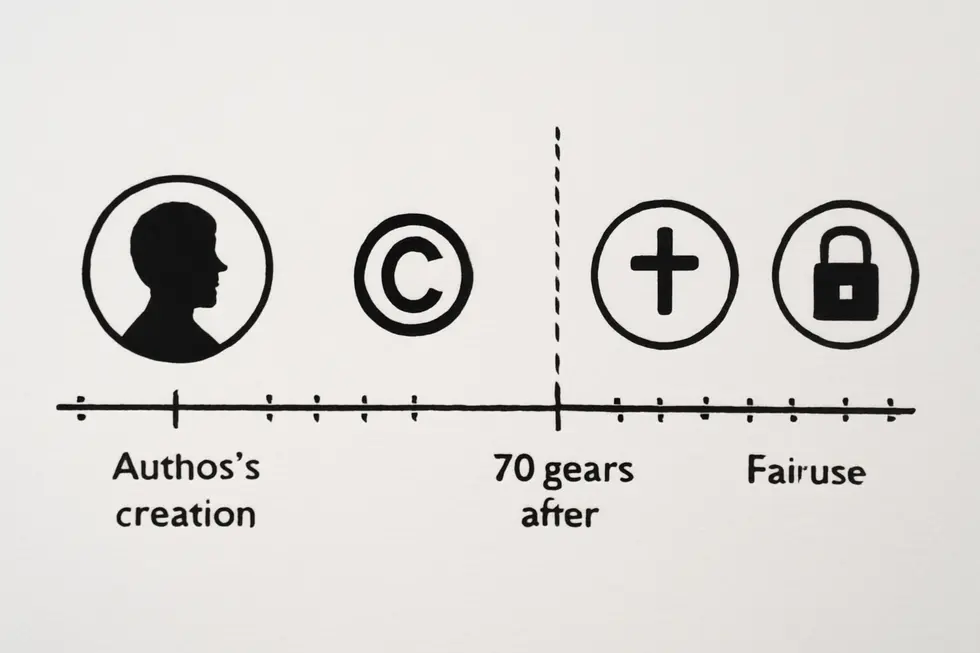
1. Navigating Legal Timeframes: How Long Does Copyrighted Meaning Last and What It Means
Copyright protection provides creators exclusive control over their original works, but this control is limited in duration by law. For individual authors who created works after January 1, 1978, copyright lasts for the life of the author plus 70 years. If a work has multiple authors, the term extends 70 years beyond the death of the last surviving author. This lengthy period aims to balance creator rights with eventual public access.
However, not all works follow the same timeline. For works made for hire, or those published anonymously or under a pseudonym, the period is fixed: either 95 years from publication or 120 years from creation, whichever expires first. These rules ensure protections reflect the nature of the work’s creation and public availability. Works created before 1978 often have more complex renewal terms, though many of these older provisions are now less common.
International conventions, such as the Berne Convention, set a minimum copyright duration of the author’s life plus 50 years. Many countries exceed this standard. For example, the United States and most Western nations grant 70 years post-mortem, while some countries like Bangladesh provide 60 years. Understanding these variations is key for anyone working with copyrighted materials across borders.
When copyright expires, works enter the public domain, allowing free use without legal restriction. This transition is vital for cultural innovation and knowledge sharing. Although registration is not compulsory for protection, it offers significant legal advantages, including facilitating infringement lawsuits and access to statutory damages.
Moreover, copyright holders retain exclusive rights during the term—controlling reproduction, distribution, public performance, display, and derivative works. Certain termination rights may also apply, enabling authors or heirs to reclaim copyrights under specific circumstances, especially for older works.
Comprehending the legal timeframes and their implications equips creators and users to manage rights effectively and respect intellectual property boundaries. For more about protecting creative work and understanding intellectual property, see this detailed article on categories of intellectual property rights.
Reference: PatentPC on copyright term and registration benefits [3][4]
2. Navigating Copyright Limits: How Public Access and Creator Rights Coexist
Copyright law grants creators exclusive control over their original works, but these rights are balanced by important limitations designed to serve broader societal interests. These constraints allow copyrighted material to be used in ways that promote creativity, education, and innovation without undermining the creator’s legal protections.
One of the central balancing mechanisms is the doctrine of fair use. This exception permits uses such as commentary, criticism, parodies, news reporting, and transformative works, all of which build upon existing copyrighted content without requiring permission. Such allowances encourage ongoing authorship and cultural dialogue, fostering new creative expressions derived from existing works.
Beyond fair use, doctrines like the “first sale” rule protect user autonomy by allowing the resale or lending of lawfully acquired physical copies, while time-shifting permits recording broadcasts for later personal viewing. These provisions recognize the public’s interests in reasonable personal use and flexibility.
The expiration of copyright protection also marks a significant public benefit. When copyrights lapse—typically 70 years after the author’s death in many jurisdictions—works enter the public domain. There, they become freely accessible for any use, preserving cultural heritage and expanding public access to knowledge.
Economic motivations further justify copyright limitations; for example, allowing reverse engineering supports competition and technological advancement. Some exceptions reflect political compromises or maintain adaptability to rapidly evolving digital landscapes, ensuring copyright remains relevant in modern contexts.
Importantly, copyright protects only the fixed expression of ideas, not the ideas themselves. Thus, this framework carefully balances the creators’ exclusive rights with essential freedoms for the public.
A deeper legal perspective on these rights and limits can be found in the comprehensive guide to copyright law. For more insights into intellectual property protections, including how copyrights intersect with other rights, see our article on categories of intellectual property rights.
3. How Society and Technology Reshape the Lifespan and Limits of Copyrighted Works
The duration and scope of copyright protection are not static; they evolve continually through the complex interplay of societal dynamics and technological progress. Technological innovations, particularly digital media and the internet, have expanded copyright’s reach but also introduced challenges to traditional concepts of ownership and fair use. For example, legislation like the U.S. Digital Millennium Copyright Act (DMCA) extended protections to digital content and criminalized bypassing digital rights management. While such measures strengthen creators’ legal control, they also at times constrain users’ freedoms and fair use rights, sparking debates over access and innovation.
Artificial Intelligence further complicates copyright frameworks by blurring lines around authorship and originality. Questions arise about whether AI-generated content merits copyright protection and how copyrighted works used in training datasets should be regulated. These unresolved issues highlight a growing need for laws that neither stifle technological advancement nor undermine creator rights.
On the societal front, public attitudes toward copyright enforcement have shifted alongside increasing access to digital media. Movements pushing for copyright reform reflect widespread concerns over overly restrictive enforcement that may hinder knowledge sharing and innovation. Legal and political responses to these pressures strive to balance creators’ incentives with the public interest, often resulting in evolving norms and legislative adjustments.
Together, technological and societal forces have led to longer copyright terms and reinforced protections, yet also prompted new limitations on use and accessibility. This dynamic relationship urges continuous reassessment of copyright’s duration and boundaries to safeguard human creativity while supporting technological and cultural progress. For a more comprehensive understanding of how technological laws adapt, consult resources on copyright legislation and law in business.
For deeper legal context on these shifts, the U.S. Digital Millennium Copyright Act (1998) offers foundational guidance on digital content protections.
Chapter 5: The Purpose and Impact of Copyrighted Meaning on Creativity and Society
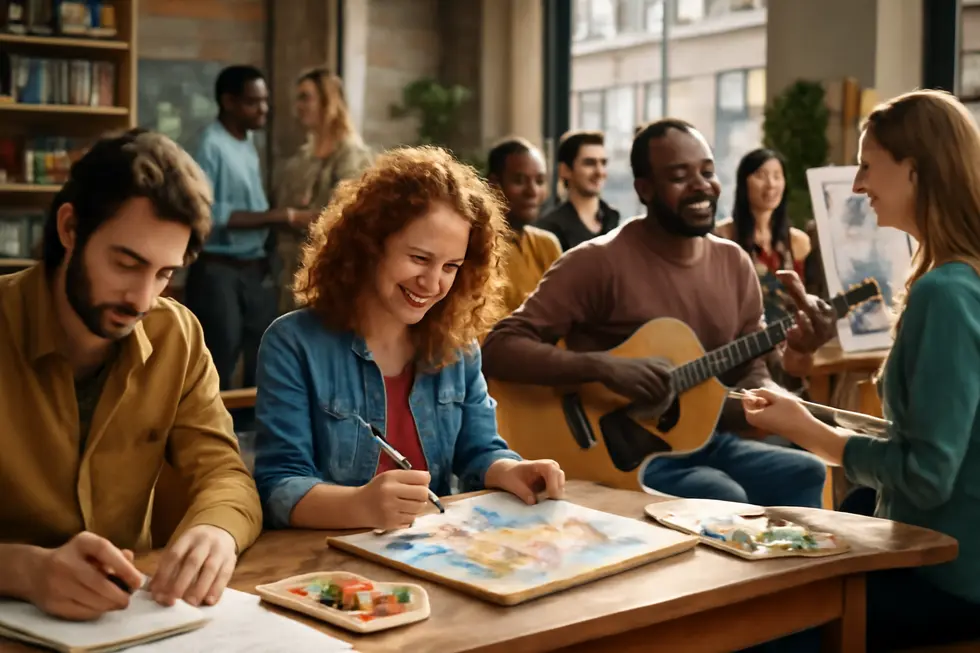
1. How Legal Protections and Economic Rewards Fuel Creative Innovation
Copyright protection provides a vital legal foundation that empowers creators by granting exclusive rights over their original works. These rights include controlling reproduction, distribution, and adaptation, ensuring creators can benefit from their efforts both financially and reputationally. By securing this exclusivity for a limited time—often lasting the life of the author plus 70 years—copyright incentivizes investment in creative industries and cultural development. This legal framework encourages artists, writers, musicians, and entrepreneurs to innovate knowing their contributions are safeguarded against unauthorized use.
However, the impact of copyright extends beyond mere protection. It shapes the economic landscape by motivating creators and businesses to develop new content, fueling job creation and economic growth in creative sectors. This exclusivity creates a marketplace where original works can be licensed, sold, or monetized, fostering a cycle of innovation. At the same time, copyright balances private interests with public access through mechanisms like fair use, which allows for knowledge sharing and educational use without undermining creators’ rights.
Yet, this balance is delicate. Overly restrictive copyright enforcement can impede the free flow of ideas and limit access to cultural materials, potentially hindering creative evolution. The challenge intensifies in the digital era, where emerging technologies such as artificial intelligence complicate traditional notions of authorship and rights management. Questions arise around whether AI-generated content qualifies for copyright protection and how laws must adapt without stifling technological progress or limiting access to information that fuels further creativity.
Ultimately, copyright functions as a dynamic system that propels human creativity while navigating the tension between exclusive control and societal benefit. This evolving interplay is crucial for sustaining both the protection of creators’ contributions and the broad availability of creative works that inspire new innovation. To understand this framework better, exploring the specific legal ownership and rights granted by copyright is essential (copyright protection explanation).
Further detailed analysis can be found in resources addressing how copyright law adapts amid technological growth to secure ongoing creative vitality.[1]
2. Navigating the Delicate Balance: How Copyright Shapes Creativity and Public Access
Copyright plays a vital role in shaping the creative landscape by granting authors exclusive rights to their original expressions, effectively recognizing their intellectual effort and personal imprint. This protection encourages creators to invest time and resources, knowing they can control reproduction, distribution, adaptation, and public performance of their works. The underlying theories, from Locke’s labour theory to utilitarian and economic perspectives, justify copyright as a mechanism that rewards creativity while aiming to maximize societal benefit through cultural dissemination.
However, the impact of copyright is a double-edged sword. While it incentivizes innovation by securing creators’ economic interests, overly stringent restrictions risk stifling creative freedom. Limitations on remix culture, derivative works, and the use of protected content in emerging technologies, such as AI training datasets, highlight the tension between protection and progress. This dynamic poses unique challenges in the digital age, where rapid technological advances demand legal frameworks that do not inhibit transformation or the free flow of ideas embedded in shared culture.
For society, copyright influences access to culture and knowledge. By controlling how cultural products are produced and disseminated, it affects who can engage with creative works and to what extent. Excessive enforcement may generate inequities, limiting public domain growth and cultural exchange. The rise of AI-generated content intensifies debates about how existing copyright laws can protect human creators’ rights without impeding technological innovation or risking a “data winter” where creative and technological evolution stalls.
Ultimately, balancing copyright’s protective function with the need to foster creative freedom and societal access requires nuanced legal frameworks. These must respect creators’ rights and compensate them fairly while ensuring copyright does not become a barrier to new innovations, cultural participation, and knowledge sharing. For a deeper exploration of these evolving challenges, see When Copyright Enters the AI Conversation.
To understand related intellectual property protections and how they interact with copyright, the comprehensive guide on intellectual property rights categories offers valuable insights.
3. Navigating Copyrighted Meaning Amid AI Innovation: Societal Challenges and Legal Nuances
Navigating Copyrighted Meaning Amid AI Innovation: Societal Challenges and Legal Nuances
Copyrighted meaning traditionally protects the creative efforts of human authors by granting exclusive rights to their original works. This legal shield encourages cultural diversity by rewarding creators, yet the rise of artificial intelligence presents complex challenges to this framework. AI systems can now generate literary, artistic, and musical content, blurring the lines of authorship and ownership. The question arises: who holds the copyright to AI-generated works, and can such works even be copyrighted? This ambiguity strains current legal systems focused on human creativity.
Moreover, the tension between protecting human creators and enabling AI innovation deepens. Restrictive copyright rules might limit the data AI requires to learn and create, hindering technological progress and access to cultural materials. On the other hand, lax protection risks economic insecurity for artists and writers whose livelihoods may be threatened by algorithmically generated content. Policymakers and society must weigh fair use, proper attribution, and the boundaries of copyright carefully to maintain a balance where both human and AI-created works can thrive.
Ethical concerns also surface regarding transparency and accountability. Recognizing original human creators through attribution can preserve cultural value and offer indirect financial benefits, even in AI-assisted productions. At the same time, consumers and industries require clarity about the provenance of AI-generated content to navigate issues of trust and authenticity.
Adapting copyrighted meaning in this era calls for nuanced legal reforms and ongoing societal dialogue to reconcile economic, cultural, and ethical stakes. For insights on these evolving discussions, the Techdirt article on copyright and AI offers valuable perspectives. Understanding these complexities contributes to fostering creativity that respects both human labor and AI’s innovative potential.
To explore the broader landscape of intellectual property rights supporting creative industries beyond copyright, see our detailed guide on categories of intellectual property rights.
Final thoughts
Understanding the meaning of copyrighted is crucial for business owners who rely on original content for their brand identity, marketing, or product development. It provides a clear legal framework that empowers creators with exclusive rights to protect their work from unauthorized use, while also setting defined limits to balance public access. By fully grasping what constitutes copyrighted material, the scope of protection, the specific rights involved, and the period these rights last, business owners can confidently navigate intellectual property challenges and opportunities. Moreover, recognizing copyright’s broader purpose allows businesses not only to protect but also to respect creativity within society, fostering innovation and fair competition. Ultimately, well-informed handling of copyrighted materials safeguards your business interests and promotes a culture of creativity and legal respect that benefits all.
Get your trademark today! Thousands have protected their brand by filing a trademark. What are you waiting for? Start your trademark application!
About us
The globe’s top website for registering trademarks and safeguarding your brand, name, logo, or slogan. We help business owners protect their identity and intellectual property with ease and confidence, ensuring lasting security for your creative assets.


